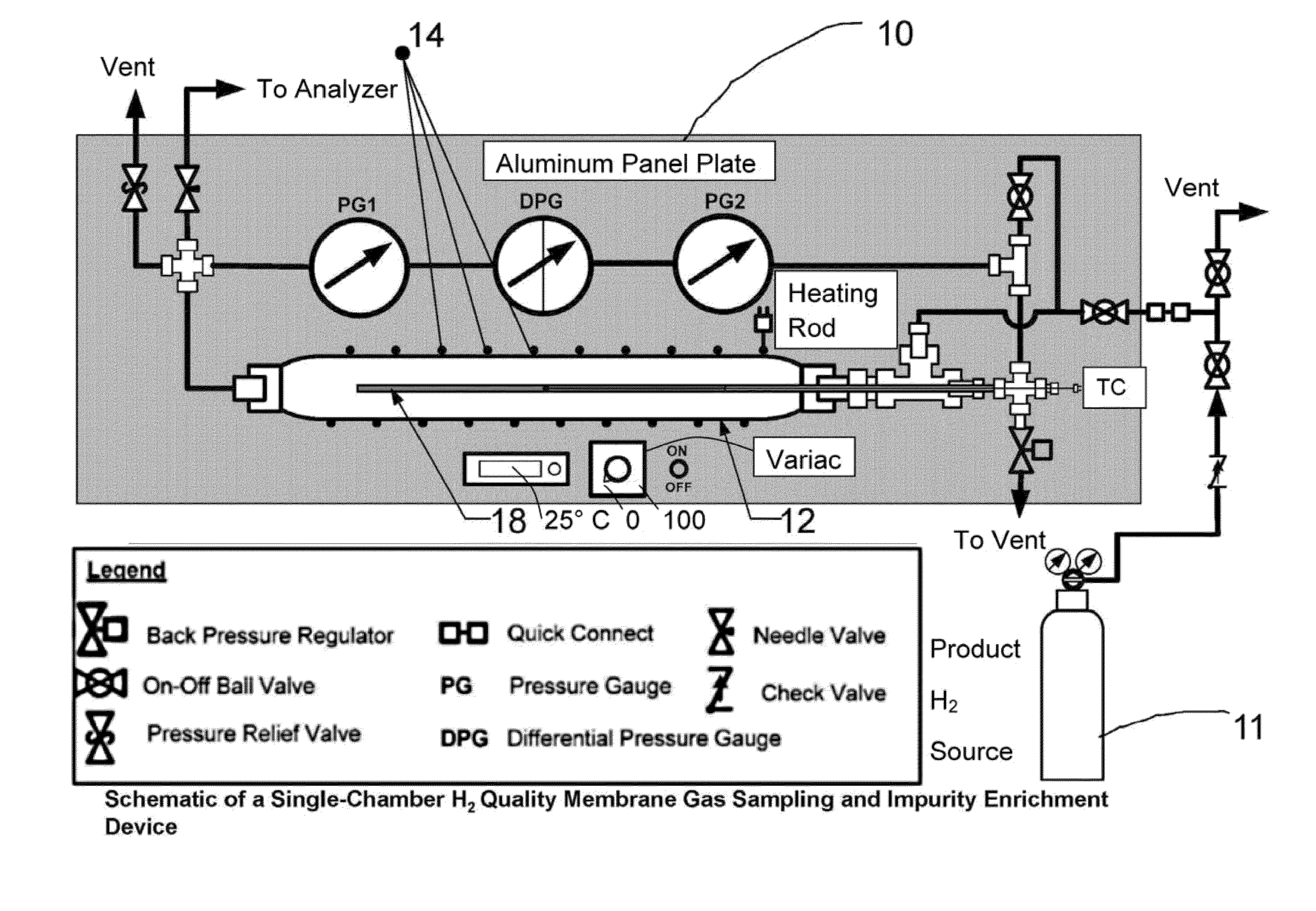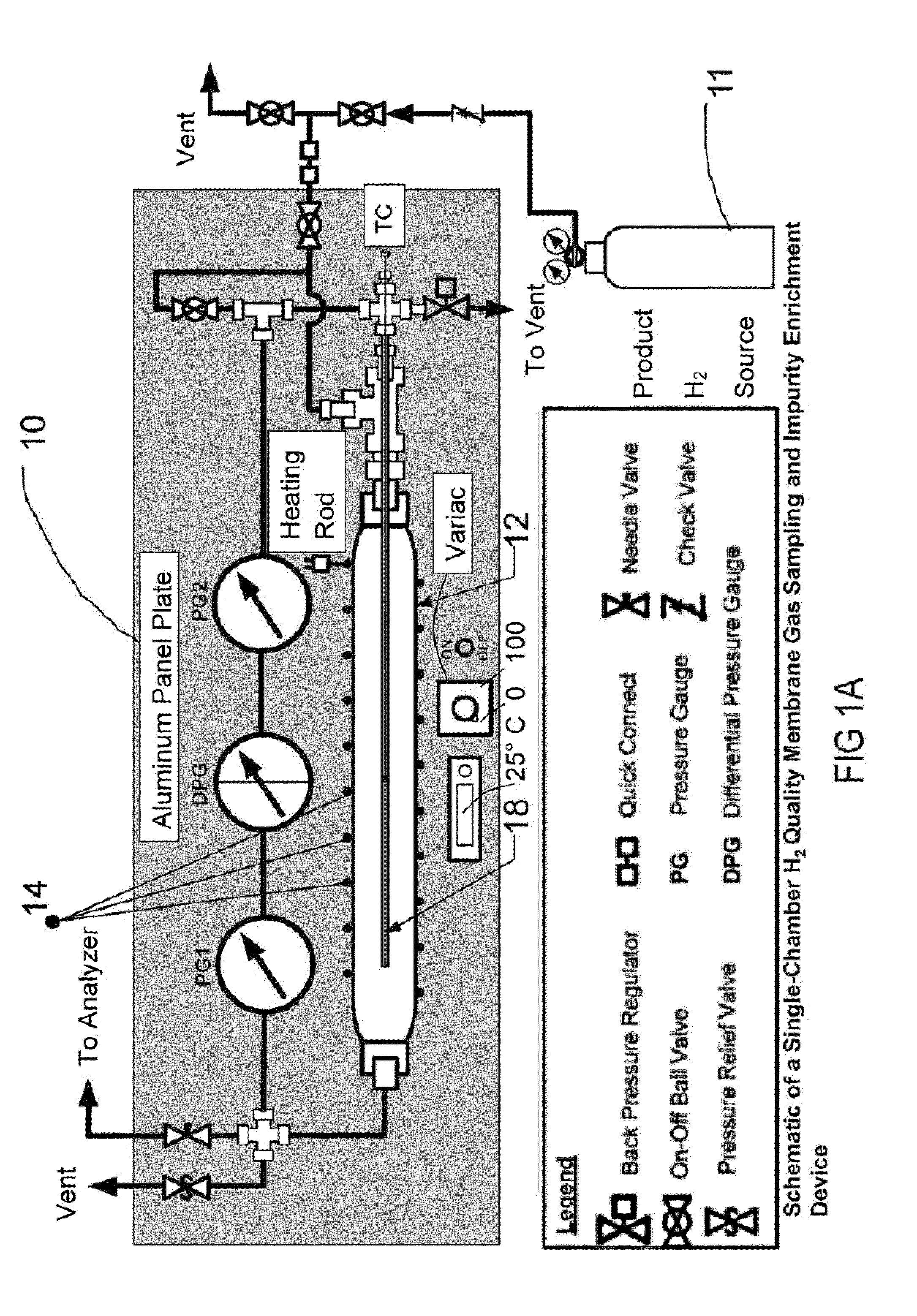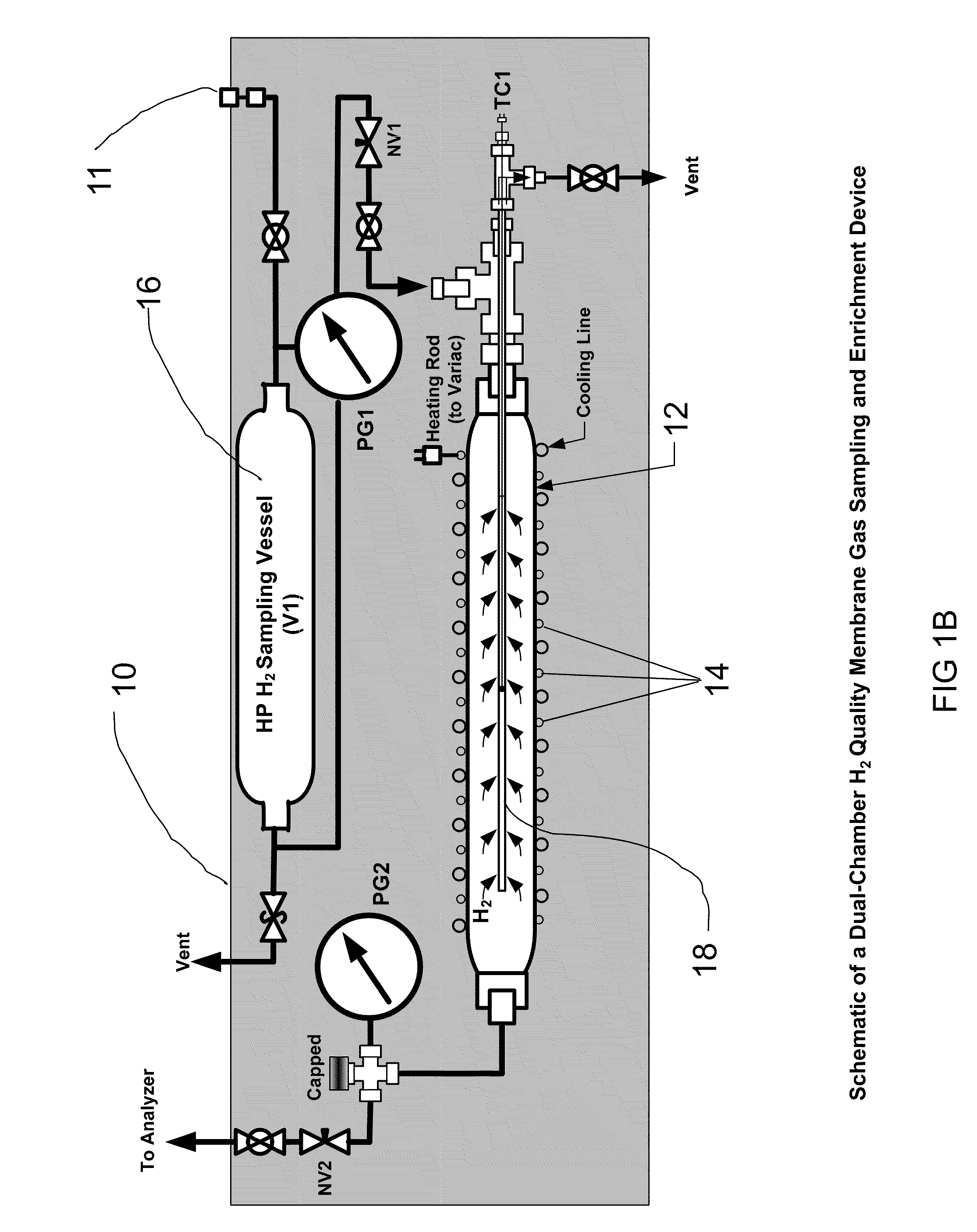Device and method to sample and enrich impurities in hydrogen
a technology of impurities and devices, applied in the field of detection of impurities in fluids, can solve the problems of high cost of demonstration projects, high cost of sensitive instruments, and high laboratory time of skilled analytical chemists, and achieve the effects of facilitating the detection of contaminants, facilitating the analysis of hydrogen fuel, and facilitating the detection of low levels of trace species
- Summary
- Abstract
- Description
- Claims
- Application Information
AI Technical Summary
Benefits of technology
Problems solved by technology
Method used
Image
Examples
example 1
[0089]Based on a model for pressure swing-adsorption developed by the inventors, and disclosed in Papadias, D.; et al., Hydrogen quality for fuel cell vehicles—A modeling study of the sensitivity of impurity content in hydrogen to the process variables in the SMR-PSA system. International Journal of Hydrogen Energy 34, 6021-6035 the entirety of which is incorporated by reference, a numerical experiment was performed to investigate the range of concentrations and pressures for which the adsorption process deviates from linearity.
[0090]A gas containing 2 ppm of CO in hydrogen was fed to a vessel filled with activated carbon after which the CO was adsorbed at various pressures. After saturation, the pressure was reduced, allowing the CO to desorb, thereby causing the CO in the gas-phase to become enriched. The same calculation was repeated but adding N2, CO2 and CH4 at equal concentrations in the feed (a total concentration of 300 ppm means that each species in the feed is 100 ppm). Wh...
example 2
Membrane Concentrator Data
[0099]Turning to FIG. 1D, a high-pressure H2 sampling vessel, 16, rated for up to 1500 psig at room temperature, is used to collect a sample of hydrogen from a hydrogen gas source 11 for analysis. The sampling vessel 16 is connected to a second chamber, or volume, heretofore designated as the impurity concentrating vessel 12. In this particular example, the concentrating vessel 12 contains a Pd-alloy membrane tube. Hydrogen transport through the membrane is activated by raising the temperature of the membrane tube. The removal of hydrogen from the chamber results in higher impurity concentrations and a lower chamber pressure. The concentrating vessel obviates the need for separating or fractionating the trace species to be analyzed. No temperature cycle is needed to desorb the impurities. Also, desorption occurs without application of a high vacuum, which otherwise would make the process unsuitable for regular analysis in the field.
[0100]A series of tests w...
example 3
Adsorption Data
[0103]To demonstrate the proof-of-concept, an experimental apparatus was set up. FIG. 2B shows the schematic of the apparatus. In an embodiment of the adsorbent-featured system, the sorbent chamber 52 (having a volume of 50 mL) was packed with about 24 g of activated carbon (provided by Norit, Inc) while a downstream chamber 53 (10 mL) was left empty. Hydrogen gas containing 0.2% of each of the impurity species N2, CO, CH4, and CO, was passed through the two vessels at high pressure (700 psig) to adsorb the impurities.
[0104]Of the four impurity species, the sorbent was found to equilibrate (i.e., reach its capacity for adsorbing) successively to the concentrations of nitrogen, carbon monoxide, methane, and carbon dioxide in the feed gas. This sequence reflects the adsorption capacity of the carbon for the species, i.e., the carbon has a greater capacity for adsorbing CO2 than the other species. Approximately 200 liters of gas (containing 0.2% each of N2, CO, CH4, and ...
PUM
 Login to View More
Login to View More Abstract
Description
Claims
Application Information
 Login to View More
Login to View More - R&D
- Intellectual Property
- Life Sciences
- Materials
- Tech Scout
- Unparalleled Data Quality
- Higher Quality Content
- 60% Fewer Hallucinations
Browse by: Latest US Patents, China's latest patents, Technical Efficacy Thesaurus, Application Domain, Technology Topic, Popular Technical Reports.
© 2025 PatSnap. All rights reserved.Legal|Privacy policy|Modern Slavery Act Transparency Statement|Sitemap|About US| Contact US: help@patsnap.com



